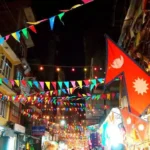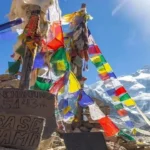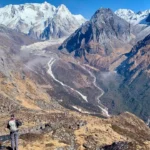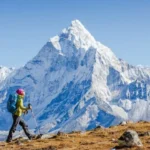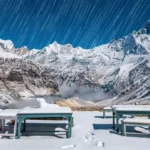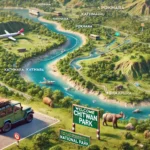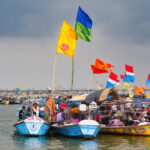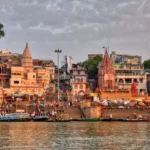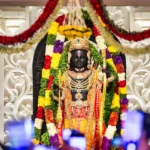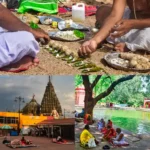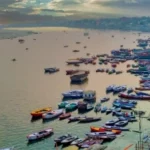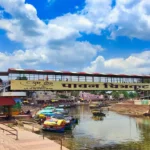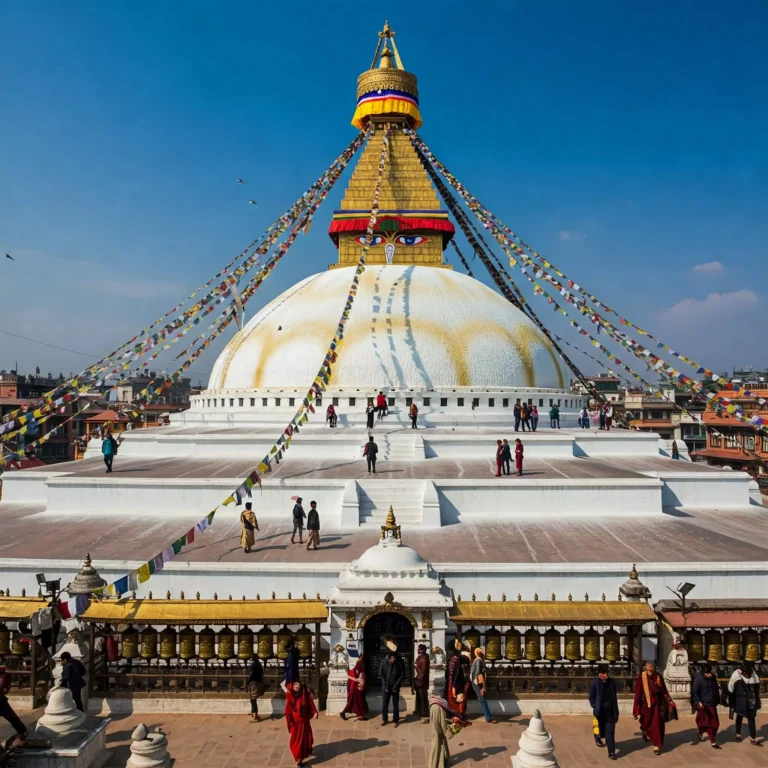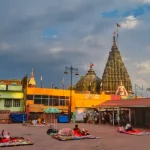The Tharu Culture & Local Villages: Heart of Chitwan Beyond the Jungle
While Chitwan National Park is known for its wildlife, it’s the Tharu people—the indigenous inhabitants of the Terai region—who bring the heart and soul to your journey. Experiencing Tharu culture adds a meaningful layer to your adventure, offering insight into a way of life that’s deeply tied to nature, tradition, and resilience.
👣 Who Are the Tharu?
The Tharu community has lived in the Chitwan area for centuries, developing a unique lifestyle in harmony with the jungle environment.
- Origins: Indigenous to the Terai lowlands of Nepal and India.
- Resilience: Historically, the Tharu people had a natural resistance to malaria, allowing them to live in forested areas when others could not.
- Connection to Nature: Their culture, homes, and livelihoods are closely tied to the rhythms of the forest and farmland.
🏡 Village Tours: A Window Into Tharu Life
A visit to a Tharu village is like stepping into a different world—quiet, earthy, and authentic.
- What You’ll See:
- Traditional mud and thatch homes decorated with hand-painted motifs.
- Locals farming, weaving baskets, and preparing traditional meals.
- Friendly hosts share stories, smiles, and sometimes snacks.
✨ Most tours are led by Tharu guides themselves, offering genuine insight—not a scripted tourist show.
🪕 Tharu Cultural Dance Show
One of the highlights of visiting Chitwan is attending a Tharu cultural performance, often hosted in the evenings near Sauraha.
- Dances to Watch:
- Stick Dance (Danda Nach): A high-energy performance with rhythmic stick clashing.
- Mayur Nach (Peacock Dance): Inspired by the movement of peacocks, often with elaborate feathered costumes.
- Music: Performed with traditional drums and local instruments.
🎟️ Most lodges in Sauraha can arrange or include a cultural dance night with your stay.

🍛 Taste of Tharu Cuisine
Don’t miss the chance to try Tharu food, which is distinct from mainstream Nepali cuisine.
- Must-Try Dishes:
- Dhikri: Steamed rice flour dumplings.
- Ghonghi: River snails cooked in spices—yes, it’s a delicacy!
- Bamboo shoot curry, lentils, and spicy pickles.
🌿 Why It Matters
Exploring Tharu culture gives travellers a deeper, more responsible travel experience. You’re not just passing through—you’re engaging with a community that has lived in harmony with the land for generations. Plus, community-based tourism directly supports local livelihoods.
Where to Stay: Best Lodges and Resorts in Chitwan National Park
Whether you’re looking for a budget-friendly jungle retreat, a mid-range eco-lodge, or a luxurious riverside resort, Chitwan National Park has accommodations for every type of travellers. Most places are based in or around Sauraha, the main gateway to the park, with options also available near Meghauli for a more exclusive experience.
🏕️ Budget Stays – Affordable Comfort Close to Nature
If you’re a backpacker travelling on a budget, Chitwan offers plenty of simple yet clean stays that don’t compromise on the jungle vibe.
Top Picks:
- Hotel Parkland – Centrally located friendly staff, and within walking distance of park entry points.
- Chitwan Gaida Lodge – One of the oldest budget lodges in Sauraha with rustic charm and great local guides.
- Baghmara Wildlife Resort – Affordable cottages, jungle-themed decor, and basic safari packages.
🌱 Mid-Range Eco-Lodges – Sustainable & Scenic
Want more comfort without breaking the bank? These eco-lodges balance style, sustainability, and authentic experience.
Recommended Options:
- Green Park Chitwan – Beautiful rooms, lush gardens, a pool, and eco-conscious operations.
- Hotel Jungle Crown – Modern amenities with a traditional aesthetic; known for good food and safari support.
- Rhino Lodge & Hotel – Located along the Rapti River with lovely sunset views and cultural program nights.
🌍 Many mid-range lodges support local conservation and employ guides from the Tharu community.
🏝️ Luxury Resorts – For the Ultimate Jungle Experience
If you’re after a bit of indulgence, Chitwan has high-end options that blend comfort with wild surroundings.
Top Luxury Stays:
- Meghauli Serai – A Taj Safari Lodge
- Situated in a remote part of the park with private villas, plunge pools, and panoramic jungle views. The service is world-class.
- Barahi Jungle Lodge
- Located on the banks of the Narayani River with eco-luxury vibes and an amazing in-house naturalist team.
- Kasara Resort
- Stylish architecture, large villas, and spa services will recharge you after a long day on safari.
🐾 These resorts offer private safaris, in-house naturalists, fine dining, and immersive nature experiences.

📍 Where Should You Stay?
- Sauraha: Great for first-timers, budget and mid-range travellers, and easy access to tours.
- Meghauli: Ideal for luxury travellers looking for seclusion, privacy, and premium safari experiences.
✨ Bonus Tips for Booking
- Book in advance during peak season-Marchch)
- Look for packages that include safaris, meals, and airport transfers.
- Check if the lodge supports ethical tourism and local communities
Travel Tips for Visiting Chitwan National Park
Planning your trip to Chitwan? Here are the must-know tips and tricks to make the most of your jungle adventure—while staying safe, respectful, and eco-friendly.
🧳 What to Pack for Chitwan
Chitwan’s climate and terrain call for practical, lightweight gear. Here’s your quick checklist:
- Light, breathable clothing (neutral colours are best for wildlife viewing)
- Long sleeves & pants (for jungle walks and mosquito protection)
- Rain jacket (especially if visiting June–Sept)
- Hiking shoes or sandals with an h grip
- Binoculars & camera for wildlife spotting
- Sunscreen, insect repellent, and hat
- Reusable water bottle to cut plastic waste
🌿 Leave flashy colours and perfumes at home—they can spook wildlife and attract bugs!
🛂 Permits & Entry Fees
To enter the park, you’ll need a Chitwan National Park entry permit:
- Cost: NPR 2,000 (approx. USD 15) for foreign nationals
- Where to Get It: Available at the park gate or through your tour operator
- Valid For: One day; multi-day permits available
🐾 Health & Safety Tips
- Malaria risk is low but bring mosquito repellent and consult your doctor about travel vaccines.
- Stay with your guide at all times in the jungle—this isn’t your average walk in the park!
- Don’t feed animals, and avoid loud noises or sudden movements on safari.
- Hydrate frequently, especially during hot seasons.
🐘 Wildlife is unpredictable—respect the animals’ space and follow your guide’s instructions carefully.
🌱 Be a Responsible Tourist
Chitwan is not just a destination—it’s a protected ecosystem and a home to local communities. Travel mindfully:
- Choose eco-certified lodges and ethical tour operators.
- Support locally-owned businesses and Tharu-run initiatives.
- Avoid elephant rides. Instead, visit ethical breeding and care centres.
- Don’t litter—carry out whatever you bring in.

📶 Connectivity & Cash
- Wi-Fi is available in most lodges, but the signal can be spotty deeper into the park.
- ATMs are available in Sauraha, but bring some cash for small purchases, tips, and local souvenirs.
With a little prep and the right mindset, your trip to Chitwan will be not just exciting—but safe, meaningful, and unforgettable.
Frequently Asked Questions About Chitwan National Park
Planning a trip to Chitwan and still have questions? No worries! Here are the answers to the most common things travellers want to know before they go.
🐅 Is Chitwan National Park safe to visit?
Yes, Chitwan is safe fortravellerss. Guided tours are conducted by trained naturalists who prioritize safety. Just follow your guide’s instructions and, stay alert during jungle walks, and you’ll be good to go.
Tip: Avoid wandering alone into the jungle, especially at dawn or dusk.
🦏 Can you see tigers in Chitwan?
Yes—but it’s not guaranteed. Bengal tigers are elusive, and sightings depend on season, luck, and timing. Your best shot is during a full-day jeep safari between November and March when vegetation is low and animals are more active.
Fun fact: Chitwan has one of the highest tiger densities in Nepal!
🕐 How many days should I stay in Chitwan?
2 to 3 days is ideal for most travelers.
- Day 1: Arrive, village walk, and Tharu cultural show
- Day 2: Jungle safari, canoe ride, or elephant centre visit
- Day 3: Birdwatching or morning walk before departure
Want more? Extend your stay to explore deeper jungle zones or enjoy some downtime at a riverside lodge.
🐘 Are elephant rides available? Should I do one?
While some places still offer elephant rides, it’s strongly recommended to skip them in favour of ethical, observation-based experiences. Instead, visit the Elephant Breeding Center or watch elephants roam in open spaces.
Responsible travel = respecting the animals, always.

💰 How much does it cost to visit Chitwan?
Costs vary based on your travel style:
- Budget: $30–$50/day (guesthouse, group safari, local food)
- Mid-range: $70–$120/day (eco-lodge, guided tours, meals)
- Luxury: $200+ (high-end lodge, private safari, full packages)
Park entry is ~$15/day for foreigners, and safari tours are usually separate.
📅 Is Chitwan open all year?
Yes, Chitwan is open year-round, but activities vary by season. Monsoon (June–Sept) can bring rain and tall grass, making wildlife harder to spot. Peak season is October to March for the best weather and visibility.
📶 Is there Wi-Fi or phone service in Chitwan?
Yes—Wi-Fi is available in most lodges and hotels in Sauraha and Meghauli. However, mobilesignalsl might be weak or nonexistent inside the park itself.
Still, have a question that’s not here. Drop it in the comments or ask us—we’ll be happy to help!









